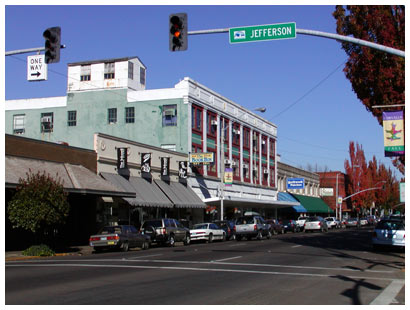Blue Highways: Agate Beach and Cape Foulweather, Oregon
Unfolding the Map
What a great, descriptive name is Cape Foulweather! The English explorer James Cook gave it the name after experiencing, you guessed it, foul weather off this coast of Oregon. The problem of coast access, and the ways in which we connect with nature are the subjects of this post, and they fit together quite nicely. Take a moment to look at the map to see our oceanfront location, and then sit back and observe what's happening!
name is Cape Foulweather! The English explorer James Cook gave it the name after experiencing, you guessed it, foul weather off this coast of Oregon. The problem of coast access, and the ways in which we connect with nature are the subjects of this post, and they fit together quite nicely. Take a moment to look at the map to see our oceanfront location, and then sit back and observe what's happening!
Book Quote
"On north to Agate Beach. Shoreline I had camped on fifteen years before was now glassy condominiums and the path to the ocean posted. Again northward to a pocket of shore between developments near Cape Foulweather. The surf rolled out an unbroken uproar like a waterfall....In the lee of a big tussock of beach grass I ate lunch, as gulls, slipping over the drafts and yawing and tilting in the stiff sea wind, watched me watch them. It's a curious sensation when nature looks back."
Blue Highways: Part 6, Chapter 4
 View of Cape Foulweather, Oregon from the Devil's Punch Bowl. Photo by "Little Mountain 5" on Wikimedia Commons. Click on photo to go to host page.
View of Cape Foulweather, Oregon from the Devil's Punch Bowl. Photo by "Little Mountain 5" on Wikimedia Commons. Click on photo to go to host page.
Agate Beach and Cape Foulweather, Oregon
Growing up in Northern California, I never really thought much about beach access. After all, I never had a problem getting to the coast. A lot of the coast was open to me. There were plenty of state parks with beach access, and even those parts of the coast where property went to the edge the bluff, my understanding was that the public had a right to walk on the beach below the bluff. In preparing for the post today, I see that I was mostly right about that - the public is allowed to walk on the wet sand which is in the highest tide area. But in my neck of the woods, we really didn't think about that too much. Beach access was available almost wherever one wanted to go.
Development was not very active, either. Sure, people built houses near the ocean, and some blocked off access to the water. This was questionable legally, since under California law if the public has used the property for access to the beach for a long time, the owner may need to live with this established public access. In my hometown, thankfully, there were no condominium developments or large tracts that blocked beach access. There was really no issue.
Imagine my surprise when I learned that public beach access wasn't available everywhere. When I met people from Massachussetts, I learned that the Cape Cod beaches were mostly off limits, and that visitors without connections were limited to crowded public beaches where, I think I remember it being said, people had to pay a fee to get on them. (Note: I am wrong on this, but one does have to pay a parking fee) In fact, I get the idea that public access to beaches is more of a rarity than anything. Even in California, the right to access some beaches is challenged. In Malibu, some property owners go to great lengths to keep people accessing beaches through their property even though it is legally questionable to do so.
Oregon is even more open to public beach access, and declared in 1961 that the state owns all wet send 16 vertical feet from the low tide line belongs to the state and that public easement, or right of way, exists up to the line of vegetation. This law was modeled on a 1959 law from a surprising source, Texas! Texas passed a pioneering open beaches law that allows the public the right to use the wet beaches and access across the dry beach up to the vegetation.
I can only see these problems of when and how the public accesses the beaches getting more pronounced as populations increase, the gap between the wealthy and the rest of the population grows, and people with the resources and means to develop the coastlands continue. This is unfortunate. Perhaps because we are all evolved from creatures that inhabited water for millions of years before the first daring being crawled out onto land, and perhaps because the human physiology is around 60% water in a mature adult, and perhaps because we need water to survive, we are attracted to bodies of water. Ocean beaches are, and should be treated as, a national treasure. It would be a shame if a majority of the American population wouldn't be able to get there, due to the selfish desires of a few.
I have one more thing to comment on in this post. LHM mentions how strange it is when one watches nature and nature watches back. When I am observing nature, I tend to forget that I am part of the scene. There is a quantum physics principle that, if I paraphrase it correctly, argues that one can never be a truly neutral observer since the act of observation will always change the outcome. Intuitively I know this, even as I watch wildlife in its "natural" state.
I became aware of this one day while watching seals at a beach in Northern California. Not content with the observation platform (and young enough to not really think that I might be disturbing the creatures as I crept ever closer to them) I moved out on the rocks very close to the water. A 20 foot wide channel separated the rock I was on from the rock the seals were sleeping upon. One looked up, noticed me, and slipped into the water. A moment later, its head popped up, nearer to me than any seal had ever gotten before. Clearly curious, it looked me over as I regarded it. It's eyes were large and as it checked me out, it suddenly gave out a soft "hooooo," almost like an owl. Surprised, I "hooo"ed back. It looked at me again swimming side to side, and then with a soft splash it ducked underwater and disappeared.
I told a friend about this experience, and she told me that I was very lucky. She went on to explain that it is rare for a wild animal not only to recognize that you are there, but actually acknowledge you. When it acknowledges you, she said, it is a gift. Since then, I have in many ways felt kindred with seals, as if for a brief moment, I was welcomed into their club or society, even if it came after I was being nosy and intrusive on them. I've since discovered the wonderful legends of the Selkies, an Irish myth of seals that can become human and can be kept human if one steals their pelt. I've wondered in the past if people I knew were Selkies.
It clearly is strange, as LHM says, when nature looks back at you. But I would add that it is also wonderful. If we all experienced nature watching us, perhaps we wouldn't take nature for granted, or worse. Perhaps we would be mindful of how we build, what we destroy and take greater measures to preserve and protect. And perhaps we would have less fighting about whether people should have access to natural treasures, and more strategizing about how to maximize people's access to them.
Musical Interlude
I don't know much about this band, Ivy, but I have one single of theirs on a compilation CD, and this is it. The song is called Edge of the Ocean. Enjoy!
If you want to know more about Agate Beach and Cape Foulweather
BeachConnection: Cape Foulweather and Cliffs
Cape Foulweather Lookout and Observatory
Community of Agate Beach
Wikipedia: Agate Beach
Wikipedia: Cape Foulweather
Next up: Depoe Bay, Oregon




 Friday, September 23, 2011 at 4:47PM
Friday, September 23, 2011 at 4:47PM








